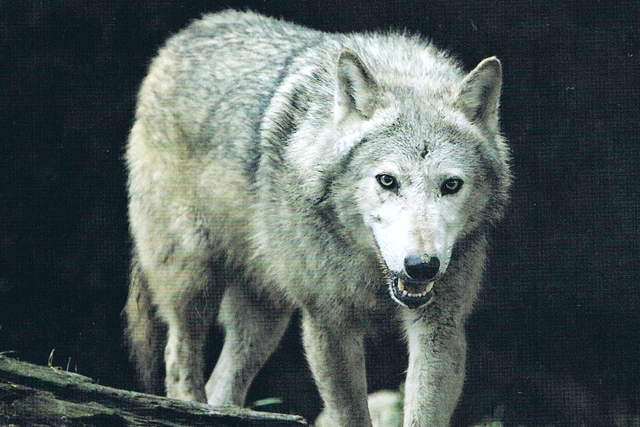By Pauline Murphy
Wolves roamed freely around Ireland for many centuries but today the only wolves to be seen here are the ones safely confined in zoos and wildlife parks.
The wolf population was a vibrant one in Ireland up until the early seventeenth century and the country even gained a nickname ‘Wolfland’.
Prior to the seventeenth century, the human population of Ireland was low which meant that the lack of human interference with the wolf resulted in its high population.
Back then, the country was vastly covered in forest which provided the wolf with protection and an abundance of food in the form of deer, boar and rabbits. Wolves were also known to feast on the leftovers of a bloody battlefield, of which there were many across the land in those days!
The earliest known location of an Irish Wolf is in north Cork where during an archaeological excavation in Castlewood Cave, near Mallow, the remains of a wolf dating to 34,000 BC were found.
The earliest known record of wolves in Ireland can be found in the Annals of Tigernach from 1137 which reports on the death of a blind man called Giolla Muire who was mauled by a pack of wolves in the midlands.
The old Irish word for wolf is ‘Mac Tire’ which translates to ‘son of the countryside’, but as Ireland gradually fell under the bondage of foreign settlers, these sons of the countryside fell under threat.
The last known wild wolf in England was killed in the 1300s, while in Scotland the wolf population was wiped out in the 1680s. When the British arrived in Ireland, they encountered a swelled population of wolves and they set about eradicating them like they had done so across Britain.
The British settlers introduced legislation to cull the wolf population, but the native Irish were not as interested in culling the Mac Tire as the British were.
Wolf hunters were brought into Ireland from Britain, enticed by the large bounties placed on wolves. A £6 bounty was placed on a female wolf, £5 for a male and £2 for cubs. Records from those times report over 300 wolf skins were exported from Ireland annually and as the centuries rolled on the number of wolves roaming Ireland decreased.
The popular belief is that the last wolf left in Ireland was killed in Carlow in 1786. The Watson family were the landlords at Ballydarton and founded the Tullow Hunt. John Watson, Master of the Tullow Hunt, was enraged by the killing of his sheep by a lone wolf who resided on Mount Leinster, so he set about tracking the unfortunate animal down. With a pack of wolfhounds, Watson and his hunt tracked the last known wolf in Ireland to a den on Mount Leinster and thus ended the tale of wolves freely roaming the Irish countryside.
Today, the wolf still roams in places such as North America and Russia but the thought of this small island of ours hosting packs of wolves again may just seem a bit too farfetched.

